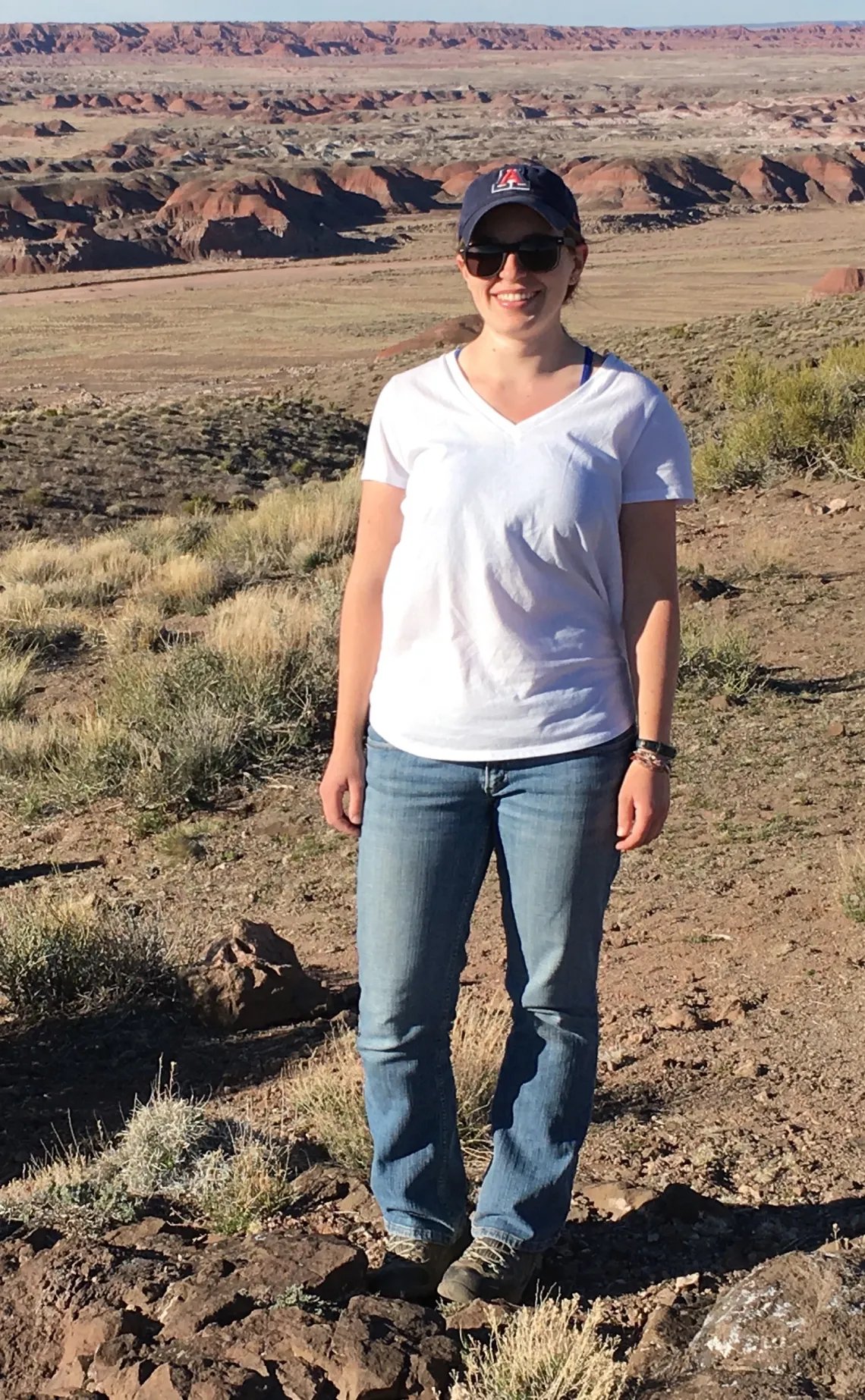Spotlight on Katherine Guns-The Southern California Earthquake Center (SCEC) Grant

Dear Graduate Students,
Katherine Guns’ last NSF GRFP application was as close to perfect as I’ve seen an application. So I was surprised when she did not receive the fellowship. However, I was delighted to learn that, as she explains below, she did end up being very successful in receiving funding. Read her wonderful story below.
Hello! My name is Katherine Guns and I am a third year PhD student in Geosciences here at the University of Arizona. My dissertation is focused on understanding the most recent geological history of the Southern San Andreas Fault in southern California, particularly with regard to future earthquake hazards.
I have written eleven grant and scholarship applications in the last year and have been awarded six of them so far. If you read no further than this first paragraph, I want to tell you today that I think these applications are like a dartboard: throw enough darts at the target, and sooner or later you will hit the mark. Practice your dart throwing over time, and you will soon learn what works and what doesn’t work—in other words, (like you have no doubt heard before) practice makes perfect. The more proposals and scholarship applications you write, the more you will learn, the more skills you will pick up, and the better you will get at it.
The hardest part, as we all know, is to get started. For me, my fellowship application journey began three years ago, when I wrote up my first application to the infamous NSF Graduate Research Fellowship Program as a senior in my undergraduate institution. I didn’t get it. I decided to apply again the next year and while it was a substantial improvement from my first try, I missed the mark again. Knowing that I only had one chance left, I decided to put it all out on the field. I used every resource at my disposal, from taking part in the NSF GRFP Application Support Program workshops here on campus, to getting comments from experienced editors from said program, to asking my graduate student friends and peers to read my essays. After all that work and all that revising, I ended up with a set of essays I was proud of. I submitted the application and resolved to be optimistic.
However—I had learned my lesson after the first two tries. The chances I would get this incredible fellowship were slim to none, and even though I worked hard to make it the best application I could, I knew the odds were against me. So, this time, before even waiting to hear back from the GRFP, I decided to start submitting more grant proposals, to see what funding I could scare up for myself and my project. As I began working on these proposals, I realized that through all that work for the GRFP, I had simplified my whole dissertation project into the clear, concise pieces—a hypothesis and a methodology to test that hypothesis. Having that clarity about my dissertation project suddenly felt like a gift, because at the base of all proposal and grant applications is that description of your project in those terms: what is your hypothesis and how are your testing it?
With that clarity in mind, I ended up applying to all the opportunities that I could fit into my busy academic schedule. I also decided to work with my advisor to write two larger grant proposals. Even though I had very little experience writing large proposals, I knew that the only way to know for certain that I would not get it would be to not try at all. That has now become my mantra—it can’t hurt to throw your hat in the ring and see what happens. It won’t hurt to throw another dart.
In March, along with many other students around the country, I found out that I—surprise, surprise—did not get the NSF GRFP. I was disappointed, but after a little wallowing, I realized that if I hadn’t written that application, I wouldn’t have had that clear picture of my research project and where it is going, which allowed me to write all those other grant applications. Without that confidence in what my research question was and how I was going to study it, I would not have felt as assured in writing the many grant proposals that came after it.
I found out a couple months ago that I received one of those large grants, and because of my hard work, the University of Arizona is getting a $21,000 contract to fund my research. So I am here to tell you—start throwing the darts. Opportunities are out there, and the only way you’ll know for sure that you won't get it is to not try. The resources exist to help you through the process—join the Fellowship application support program, talk to other graduate students in your department and see what they have applied to, talk to your advisor and see if they can nominate you for inter-university scholarships, and remember to check out the Grad-Funding newsletters new opportunities!
Good luck!

